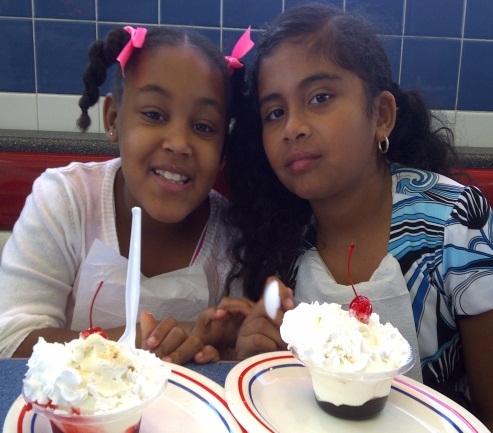Microaggressions: What’s Inside You – Will Come Out
 I distinctively recall a very casual conversation I had with a co-worker one day. As she stood before me expressing her disgust and frustration due to her daughter’s latest inauspicious actions, without thinking, I announced, “How trifling!” No sooner I said those words; I wished I could stuff them back down my throat. Later, I asked myself, How could I?
I distinctively recall a very casual conversation I had with a co-worker one day. As she stood before me expressing her disgust and frustration due to her daughter’s latest inauspicious actions, without thinking, I announced, “How trifling!” No sooner I said those words; I wished I could stuff them back down my throat. Later, I asked myself, How could I?
I apologized immensely assuring her I meant no harm, and I should not have judged her daughter. My co-worker stood calmly looking me straightly in the eyes and said, “That’s okay. What’s inside you will come out.” I began a strained attempt to quantify my statement by explaining what I meant. By now, I’m sure my words became deafening, and she could care less for furtherance of my babbling.
I can’t tell you how badly I felt. Just imagine. How could I judge another’s daughter, for I have a daughter of my own? Furthermore, I’ve always pledged not to utter ill words of another mother’s child.
I can tell you this; however, that scene has never left my mind. I learned something vital that day. I carry it with me often, and I reflect on those words more than you’ll ever imagine. That one experience has allowed me not only to mirror that moment countless times, but has taught me to become more cautious before opening my mouth.
Just recently, I read Dr. Dana Leeman’s July 30, 2015 article, titled: “Everyday Stings: The Power and Pain of Microaggressions” and suddenly that ill-timed scenario with my co-worker trickled back to mind.
Dr. Leeman’s definition of microagressions is as follows: subtle, often nuanced, verbal or behavioral slights, snubs, or insults that can be intentional, but are often unintentional. They communicate negative, pejorative, and sometimes hostile messages to others solely based on their membership in a marginalized group.
Dr. Leeman (2015) goes on to say, “We are products of our context and socialization, and we are not above saying or doing insensitive things…”
With this in mind, I’d like to reflect a minute on what my co-worker said to me that day. “What’s inside you will come out.” Just think on these words for just a moment, asking how is it we learn the “stings” which causes pain and hurt to others? How did we usurp and develop traces, tinges and shades of miffs which offend others that are embodied within our hearts, and thought processes? As you reflect on these questions for just a bit, I’ll declare I must concur with Dr. Leeman. We are indeed products of our context and socialization. We are what we’ve observed, learned and absorbed from our first role-models (our parents and/or caretakers) who influenced us from infancy. What a loaded statement, right?
What I believe, nonetheless, is this: If we truly desire to make positive changes for the better where microagressive actions (whether verbal or in deed), we must begin working with our children from the cradle, early and often. Just imagine the many years one has had learning and embedding what has been learned by our role-models/first teachers. We are like sponges cramming what our home lives imparted, shown and trained.
Parents and caregivers must teach children social skills, social etiquette, care and respect for others. What about this statement? — Do unto others as you’d have them do unto you. When we teach our children to carefully nurture and give attention to their actions, we also teach lessons in remorseful conducts, manners and attitudes. Are we perfect? No way! But practices of compassion, sensitivity and consideration for others produce consistency, and breeds socially appropriate preferences while allowing for steady uniformity of goodness towards others (words and deeds).
Home is where the inception (the burning torch) begins. Parents must teach cultural sensitivity at home, and then pass the social skills torch to school officials. Educators must command and take ownership of the burning torch while entertaining passion for culturally-responsive pedagogy. Legislators and policy makers must allow educators to include and incorporate culturally-responsive curriculum within lesson planning. When this occurs, we will become kinder, more loving toward one another, and I’ll be willing to strongly anticipate microagressive behaviors will lessen.
Cherrye S. Vasquez's Blog
- Cherrye S. Vasquez's profile
- 37 followers



